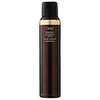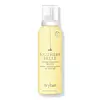What's inside
What's inside
 Key Ingredients
Key Ingredients

 Benefits
Benefits

 Concerns
Concerns

 Ingredients Side-by-side
Ingredients Side-by-side

Water
Skin ConditioningVp/Va Copolymer
Isobutane
Propane
Cetearyl Alcohol
EmollientPEG-40 Hydrogenated Castor Oil
EmulsifyingOleth-20
CleansingParfum
MaskingPhenoxyethanol
PreservativePolyquaternium-4
Laureth-4
EmulsifyingSodium C14-16 Olefin Sulfonate
CleansingStearyl Alcohol
EmollientCetrimonium Bromide
AntimicrobialPanthenol
Skin ConditioningEthylhexylglycerin
Skin ConditioningSilicone Quaternium-3
Glycerin
HumectantHelianthus Annuus Seed Oil
EmollientTocopheryl Acetate
AntioxidantTrideceth-12
EmulsifyingBenzophenone-4
UV AbsorberSodium Benzoate
MaskingSodium Hydroxide
BufferingPolyurethane-14
Alcohol Denat.
AntimicrobialSilicone Quaternium-16
Skin ConditioningCitrullus Lanatus Fruit Extract
Skin ConditioningLitchi Chinensis Fruit Extract
Skin ConditioningLeontopodium Alpinum Flower/Leaf Extract
Skin ConditioningUndeceth-11
EmollientAmp-Acrylates Copolymer
Tocopherol
AntioxidantAminomethyl Propanol
BufferingButyloctanol
HumectantUndeceth-5
EmulsifyingStyrax Benzoin Resin Extract
MaskingCitric Acid
BufferingPotassium Sorbate
PreservativeAcetic Acid
BufferingIodopropynyl Butylcarbamate
PreservativeLimonene
PerfumingHexyl Cinnamal
PerfumingLinalool
PerfumingCitral
PerfumingWater, Vp/Va Copolymer, Isobutane, Propane, Cetearyl Alcohol, PEG-40 Hydrogenated Castor Oil, Oleth-20, Parfum, Phenoxyethanol, Polyquaternium-4, Laureth-4, Sodium C14-16 Olefin Sulfonate, Stearyl Alcohol, Cetrimonium Bromide, Panthenol, Ethylhexylglycerin, Silicone Quaternium-3, Glycerin, Helianthus Annuus Seed Oil, Tocopheryl Acetate, Trideceth-12, Benzophenone-4, Sodium Benzoate, Sodium Hydroxide, Polyurethane-14, Alcohol Denat., Silicone Quaternium-16, Citrullus Lanatus Fruit Extract, Litchi Chinensis Fruit Extract, Leontopodium Alpinum Flower/Leaf Extract, Undeceth-11, Amp-Acrylates Copolymer, Tocopherol, Aminomethyl Propanol, Butyloctanol, Undeceth-5, Styrax Benzoin Resin Extract, Citric Acid, Potassium Sorbate, Acetic Acid, Iodopropynyl Butylcarbamate, Limonene, Hexyl Cinnamal, Linalool, Citral
Water
Skin ConditioningIsobutane
Propane
Hydrolyzed Soy Protein
HumectantCamellia Sinensis Leaf Extract
AntimicrobialRhodiola Rosea Root Extract
EmollientCitrus Junos Seed Extract
AntioxidantCyperus Esculentus Root Oil
MaskingHelianthus Annuus Seed Oil
EmollientPrunus Insititia Seed Oil
EmollientTocopheryl Acetate
AntioxidantPanthenol
Skin ConditioningPvp
Emulsion StabilisingPolyquaternium-4
Laureth-4
EmulsifyingOleth-20
CleansingCetyl Alcohol
EmollientPolyquaternium-11
Parfum
MaskingPEG-40 Hydrogenated Castor Oil
EmulsifyingSodium C14-16 Olefin Sulfonate
CleansingStearyl Alcohol
EmollientCetrimonium Bromide
AntimicrobialEthylhexylglycerin
Skin ConditioningSilicone Quaternium-3
Trideceth-12
EmulsifyingEthylhexyl Methoxycinnamate
UV AbsorberPropylene Glycol
HumectantButylene Glycol
HumectantPentylene Glycol
Skin ConditioningPhenoxyethanol
PreservativeDisodium EDTA
Sodium Hydroxide
BufferingPotassium Sorbate
PreservativeBHT
AntioxidantLinalool
PerfumingAlpha-Isomethyl Ionone
PerfumingWater, Isobutane, Propane, Hydrolyzed Soy Protein, Camellia Sinensis Leaf Extract, Rhodiola Rosea Root Extract, Citrus Junos Seed Extract, Cyperus Esculentus Root Oil, Helianthus Annuus Seed Oil, Prunus Insititia Seed Oil, Tocopheryl Acetate, Panthenol, Pvp, Polyquaternium-4, Laureth-4, Oleth-20, Cetyl Alcohol, Polyquaternium-11, Parfum, PEG-40 Hydrogenated Castor Oil, Sodium C14-16 Olefin Sulfonate, Stearyl Alcohol, Cetrimonium Bromide, Ethylhexylglycerin, Silicone Quaternium-3, Trideceth-12, Ethylhexyl Methoxycinnamate, Propylene Glycol, Butylene Glycol, Pentylene Glycol, Phenoxyethanol, Disodium EDTA, Sodium Hydroxide, Potassium Sorbate, BHT, Linalool, Alpha-Isomethyl Ionone
Ingredients Explained
These ingredients are found in both products.
Ingredients higher up in an ingredient list are typically present in a larger amount.
Cetrimonium Bromide is a preservative.
Ethylhexylglycerin (we can't pronounce this either) is commonly used as a preservative and skin softener. It is derived from glyceryl.
You might see Ethylhexylglycerin often paired with other preservatives such as phenoxyethanol. Ethylhexylglycerin has been found to increase the effectiveness of these other preservatives.
Helianthus Annuus Seed Oil is the oil derived from the seeds of a Sunflower. Sunflower seed oil is non-fragrant. It is an emollient, meaning it helps to soften the skin.
Sunflower seed oil contains many fatty acids. The fatty acids found in sunflower seeds include (from highest amount to least): linoleic acid, myristic acid, palmitic acid, stearic acid, arachidic acid, oleic acid, and linolenic acid.
These fatty acids help the skin create ceramides. Ceramides play a role in repairing the skin barrier.
Helianthus Annuus Seed Oil helps moisturize the skin. This in turn helps the skin look more rejuvenated and smoother.
Sunflowers are rich in vitamin E.
Historians believe Indigenous cultures of North America domesticated sunflowers before corn. Thus they relied on sunflower oil for a variety of uses. One such use is moisturizing skin and hair.
Sunflower seed oil may not be fungal acne safe. We recommend speaking with a professional if you have any concerns.
Learn more about Helianthus Annuus Seed OilWe don't have a description for Isobutane yet.
Laureth-4 is created by reacting ethylene oxide with Lauryl Alcohol. It is a surfactant and emulsifier.
Surfactants reduce the surface tension of ingredients so they can mix better. Emulsifiers prevent ingredients such as oil and water from separating.
Linalool is a fragrance and helps add scent to products. It's derived from common plants such as cinnamon, mint, citrus, and lavender.
Like Limonene, this ingredient oxidizes when exposed to air. Oxidized linalool can cause allergies and skin sensitivity.
This ingredient has a scent that is floral, spicy tropical, and citrus-like.
Learn more about LinaloolOleth-20 comes from oleyl alcohol. It is an emulsifier that helps reduce surface tension of dirt and pollutants to be washed away.
The 20 stands for the average number of ethylene oxide units.
Panthenol is a common ingredient that helps hydrate and soothe the skin. It is found naturally in our skin and hair.
There are two forms of panthenol: D and L.
D-panthenol is also known as dexpanthenol. Most cosmetics use dexpanthenol or a mixture of D and L-panthenol.
Panthenol is famous due to its ability to go deeper into the skin's layers. Using this ingredient has numerous pros (and no cons):
Like hyaluronic acid, panthenol is a humectant. Humectants are able to bind and hold large amounts of water to keep skin hydrated.
This ingredient works well for wound healing. It works by increasing tissue in the wound and helps close open wounds.
Once oxidized, panthenol converts to pantothenic acid. Panthothenic acid is found in all living cells.
This ingredient is also referred to as pro-vitamin B5.
Learn more about PanthenolParfum is a catch-all term for an ingredient or more that is used to give a scent to products.
Also called "fragrance", this ingredient can be a blend of hundreds of chemicals or plant oils. This means every product with "fragrance" or "parfum" in the ingredients list is a different mixture.
For instance, Habanolide is a proprietary trade name for a specific aroma chemical. When used as a fragrance ingredient in cosmetics, most aroma chemicals fall under the broad labeling category of “FRAGRANCE” or “PARFUM” according to EU and US regulations.
The term 'parfum' or 'fragrance' is not regulated in many countries. In many cases, it is up to the brand to define this term.
For instance, many brands choose to label themselves as "fragrance-free" because they are not using synthetic fragrances. However, their products may still contain ingredients such as essential oils that are considered a fragrance by INCI standards.
One example is Calendula flower extract. Calendula is an essential oil that still imparts a scent or 'fragrance'.
Depending on the blend, the ingredients in the mixture can cause allergies and sensitivities on the skin. Some ingredients that are known EU allergens include linalool and citronellol.
Parfum can also be used to mask or cover an unpleasant scent.
The bottom line is: not all fragrances/parfum/ingredients are created equally. If you are worried about fragrances, we recommend taking a closer look at an ingredient. And of course, we always recommend speaking with a professional.
Learn more about ParfumPeg-40 Hydrogenated Castor Oil is derived from castor oil and polyethylene glycol (PEG). It is used as a emollient and emulsifier.
As an emulsifier, it helps prevent ingredients from separating. It also helps make the other ingredients more soluble; it is often used to solubilize fragrances. This increases spreadability and elongates shelf life in a product.
Emollients help soothe and soften the skin. They do this by creating a protective film on your skin. This barrier helps trap moisture and keeps your skin hydrated. Emollients may be effective at treating dry or itchy skin.
This ingredient may or may not be vegan, depending on the source.
Peg-40 Hydrogenated Castor Oil may not be fungal-acne safe. We recommend speaking with a professional if you have any questions or concerns.
Learn more about PEG-40 Hydrogenated Castor OilPhenoxyethanol is a preservative that has germicide, antimicrobial, and aromatic properties. Studies show that phenoxyethanol can prevent microbial growth. By itself, it has a scent that is similar to that of a rose.
It's often used in formulations along with Caprylyl Glycol to preserve the shelf life of products.
We don't have a description for Polyquaternium-4 yet.
Potassium Sorbate is a preservative used to prevent yeast and mold in products. It is commonly found in both cosmetic and food products.
This ingredient comes from potassium salt derived from sorbic acid. Sorbic acid is a natural antibiotic and effective against fungus.
Both potassium sorbate and sorbic acid can be found in baked goods, cheeses, dried meats, dried fruit, ice cream, pickles, wine, yogurt, and more.
You'll often find this ingredient used with other preservatives.
Learn more about Potassium SorbatePropane is a gas derived from petroleum and natural gas. It is used as a propellant.
This ingredient is most commonly used in shaving cream, hair products, and makeup.
Silicone Quaternium-3 is a type of silicone.
Sodium C14-16 Olefin Sulfonate is a cleansing agent made from a mixture of long chain sulfonate salts. It can also help produce foam.
This ingredient may be drying. We recommend speaking with a professional if you have concerns.
Sodium Hydroxide is also known as lye or caustic soda. It is used to adjust the pH of products; many ingredients require a specific pH to be effective.
In small amounts, sodium hydroxide is considered safe to use. However, large amounts may cause chemical burns due to its high alkaline.
Your skin has a natural pH and acid mantle. This acid mantle helps prevent harmful bacteria from breaking through. The acid mantle also helps keep your skin hydrated.
"Alkaline" refers to a high pH level. A low pH level would be considered acidic.
Learn more about Sodium HydroxideStearyl Alcohol is a type of fatty alcohol from stearic acid. It is a white, waxy compound used to emulsify ingredients.
Fatty Alcohols are most often used as an emollient or to thicken a product. Emollients help soothe and hydrate the skin by trapping moisture.
They are usually derived from natural fats and oils and therefore do not have the same drying or irritating effect as solvent alcohols. FDA allows products labeled "alcohol-free" to have fatty alcohols.
Learn more about Stearyl AlcoholTocopheryl Acetate is AKA Vitamin E. It is an antioxidant and protects your skin from free radicals. Free radicals damage the skin by breaking down collagen.
One study found using Tocopheryl Acetate with Vitamin C decreased the number of sunburned cells.
Tocopheryl Acetate is commonly found in both skincare and dietary supplements.
Learn more about Tocopheryl AcetateWe don't have a description for Trideceth-12 yet.
Water. It's the most common cosmetic ingredient of all. You'll usually see it at the top of ingredient lists, meaning that it makes up the largest part of the product.
So why is it so popular? Water most often acts as a solvent - this means that it helps dissolve other ingredients into the formulation.
You'll also recognize water as that liquid we all need to stay alive. If you see this, drink a glass of water. Stay hydrated!
Learn more about Water